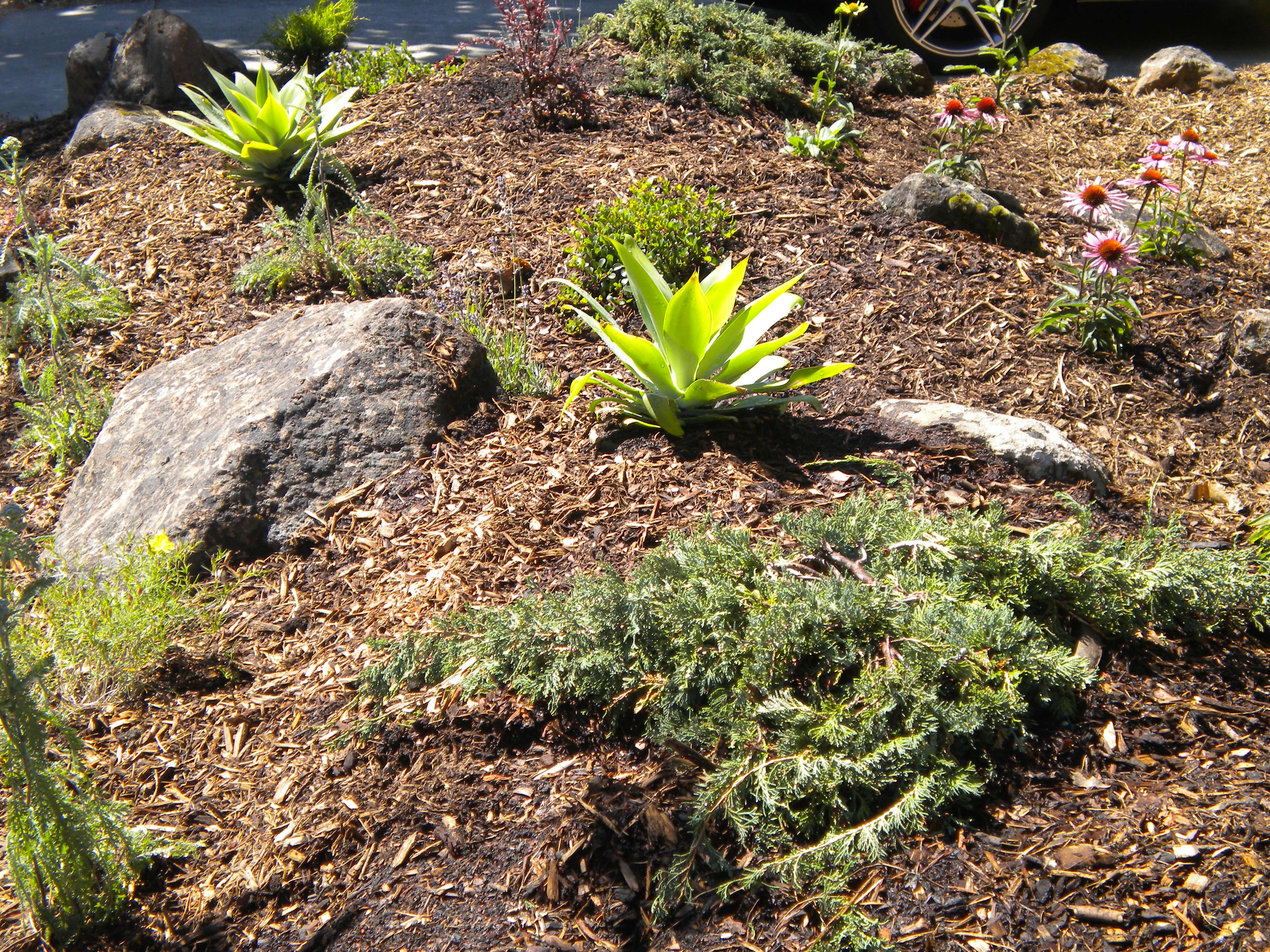I took the day to meet with potential clients, mostly to overhaul or install completely new irrigation systems. A woeful state of affairs with all the warm, dry days that we have had and will be getting. Irrigation irritation was not the only thing these hand-wringing folks had in common.
They all had dreams of converting areas, modest and massive, for the purpose of food production. Fantastic! To help prepare them for the weeks to come, we sorted out a few must haves for success with their crops. Simply put: a sunny spot with few weeds and good soil, water, and protection from pests.
A sunny spot. That spot in your garden that gets sun most of the day will do perfectly. If there are tall buildings or overhanging limbs that block the sun for more than half the day, pick a different spot. If all else fails, you may be growing your vegetables and herbs in pots on your patio or deck.
Few weeds. Never are weeds not an issue. Sheetmulching has been our best practice for getting weeds under control and preparing an area for planting. It not only smothers most weeds, but adding an inch of compost beneath the paper gives your soil an extra helping of nitrogen and a complex mix of microorganisms. Unlike weed barriers and landscape fabrics (black plastic should be outlawed, Period), the paper breaks down over a couple rainy seasons and you plant in it by making x-shaped cuts with a small blade or shovel. The key to keeping the weeds at bay is to keep top-dressing with plant appropriate mulch to maintain a depth of 3 inches, especially over disturbed soil.
!!! Please leave at least 20% of the ground free of mulch. Pick areas beneath shrubs or similar areas that do not have foot traffic. This is for native bees that are ground-nesters that you want, I swear you do, in your garden!!!
Good soil. If you are amending soil to put your crops directly into the ground, start with an aged compost. We use West Coast Chip Harvesters, American Soil & Stone Products, or LH Voss depending on where the job is. Vegetable crops tend to be shallow-rooted, except for perennials such as rhubarb and artichokes. With shallow-rooting in mind, less is more. We usually get away with a mix of parent soil and compost in equal parts. Parent soil around the SF Bay varies widely, so let us assume clay for parent soil in this instance. We start by taking a 3-inch layer of parent soil from a 4 square-foot footprint and chopping it into 1 cubic foot of stinky compost. We stop torturing the soil (and ourselves) when our mixture looks like soil marbles; bigger than peas but smaller than walnuts. Spread the soil back over the original 4 square-foot spot. Do not tamp. If you want to add some protection against weeds, now is a good time for the sheet mulch and another inch or two of compost. Water slowly but generously with a sprayer on the shower setting.
If you are planting in raised beds, disregard the previous paragraph. Import organic soil, specific for vegetables, and tamp layers in 3 inches at time until you reach the appropriate height in the bed. Do not worry about compost this first season, but top-dress with it in seasons to follow.
The area is ready to plant.
Keeping your thirsty plants hydrated is crucial. It’s great to have an irrigation valve dedicated to your vegetables. We have used both solenoid or hose bib timers with much success. We prefer pressure-compensating bubblers for heavy water that can be moved around, increased or decreased, or closed down completely as needed. We were in the habit of installing inline shut-offs on the PE lines, but they ended up being too macro for micro production. Have an assortment of fittings, especially goof plugs, on hand so that leaks can be repaired quickly. Yes, leaks. You will get them, you will know or learn how to fix them. It is just water.
Protection against pests… slugs, snails, white fly, your neighbor’s chicken that went rouge… Good sanitation is key. For ornamental areas we let the leaves fall where they may and decompose back into the soil. We are more vigilant about removing dead, dying, or diseased plant material to a compost bin when dealing with veggies and herbs. If you do not mind the look of straw, this is a light and airy top-dressing that houses very few pests. Straw is less likely to have weed seed than hay. For slugs and snails, fresh copper strips are effective until they are not fresh and baiting a nearby groundcover draws the little buggers away from you crop. Whitefly, as well as a whole mess of sucking and rasping insects can be sprayed off with a hose and the plant can be treated with our Neem oil concoction. But your neighbor’s chicken, well it would go great with your vegetables chopped into a pot full of dumplings. It’s true and you know it.


